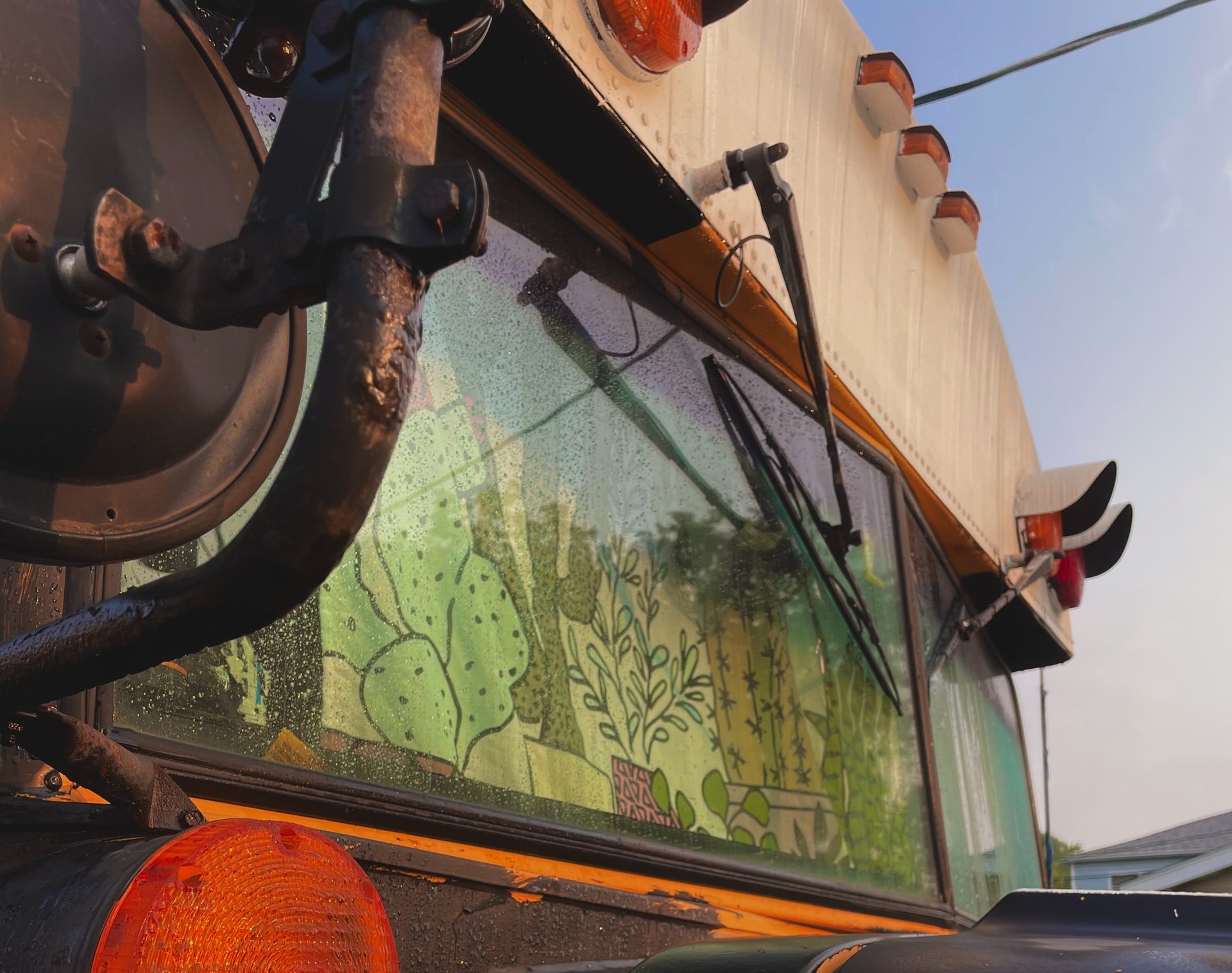As more and more discover their love for traveling and adventure, thousands forgo traditional properties to live in mobile homes like skoolies and vans.
The choice to live full-time in a vehicle is often easier than choosing the vehicle itself. After all, there are hundreds of on-the-road vehicle options out there, each with its own advantages and disadvantages!
For this reason, we’ve compiled a list of similarities and differences between two of the most popular mobile vehicles. Skoolies vs. vans: which is the best option for you? Let’s find out!
Skoolie vs. Van: Quick Overview
Skoolies are school buses that have been gutted and refurbished to look like a tiny home. These vehicles can be as short as 20 feet to as long as 45 feet.
Skoolie owners remove all the seats inside the bus and replace them with amenities such as beds, kitchens, bathrooms, running water, heating, and more. If done right, skoolies can be a cost-effective alternative to manufactured RVs.
Vans are smaller than skoolies. Like skoolies, vans used for part- or full-time living have been modified with basic amenities including a kitchenette, a bed platform, and storage. Since vans aren’t very spacious, they don’t usually come with bathrooms or living areas.
In social media, skoolies and vans are popularized by the hashtag #vanlife and #skoolielife. Many of the photos include romanticized visions of the nomadic lifestyle, with idyllic natural sceneries and spotless, stylized interiors.
What’s the Difference Between a Skoolie and a Van?
While both are used by nomadic travelers and frequent adventurers, skoolies and vans have quite a few differences. Some of the most notable are as follows:
Cost
Depending on how you go about refurbishing your vehicle of choice, one could easily cost more than the other.
For instance, a used school bus can cost anywhere between $3,000 to $7,000, while a brand new bus can hit the $50,000 range or higher. However, most people don’t buy new school buses. More often than not, skoolies are a product of used school buses.
But apart from the bus itself, you’ll also have to consider the cost of amenities you’ll buy to make it a functioning home. Therefore, you may have to pay about $5,000 to $10,000 overall for a fully refurbished skoolie.
Vans can cost anywhere between $5,000 to $50,000. Some people spend about $30,000 for a new 4WD Sprinter and another $15,000 on a high-tech campervan conversion. Others buy a used van for $3,000 and spend another $3,000 converting it with a queen-sized bed, kitchenette, fridge, solar power, etc.
Due to size, skoolies generally cost more than vans in terms of amenities. However, you don’t always have to fully furnish your vehicles. All you need is a bed and several amenities you can borrow from your home.
Space and Livability
As discussed, vans have way less space than skoolies. Mini or short buses are at least 20-25 feet, but even so, they still have more space than average-sized vans.
If you’re planning to live by yourself and not too picky with space, go for a van. Otherwise, it won’t hurt spending a couple extra thousand dollars for a full-sized school bus for convenience. Ultimately, it depends on your preference.
For families, skoolies are more ideal since they’re quite similar to RVs. Plus, storing things is way easier in a skoolie than in a van.
Fuel Consumption
Generally, buses use way more fuel than vans. Vans have an average fuel economy of 17.5 MPG. Buses, on the other hand, average at 7-10 MPG. Keep in mind that the higher a car’s MPG, the more fuel-efficient it is. For this reason, you’ll be spending less fuel on a sprinter van.
With that said, skoolies aren’t typically used for all-day traveling. Skoolies are limited to flat dirt roads and paved roads, so the number of places you can travel to is sparse. Since skoolies are so large, they’ll also prevent you from parking anywhere you like. It’s likely that you won’t spend much fuel when driving a skoolie because you won’t drive it as much as you would a van.
If you’re an adventurer and love going on long road trips, consider buying a van instead of a skoolie. Vans can drive on sandy beaches, backcountry roads, and even mountain tops.
If you don’t mind spending a couple of extra dollars for fuel while traveling on the road, the comfort a skoolie provides might be worth it.
Weather Protection
Since you’re likely to have a kitchenette installed in your skoolie, you don’t have to go outside in the frigid air or scorching heat to cook your food.
Van lifers spend much of their time outdoors since most vans don’t even offer full head height. Usually, vans are only used as a place to sleep and rest in.
If you’re planning to travel a lot in the middle of summer or winter, it might be best to get a skoolie as it offers better weather protection.
Construction
Both skoolies and vans have sturdy constructions. But since school buses are made to transport children, manufacturers make sure they hold up well in the event of an accident. Therefore, technically speaking, skoolies are safer in accidents than mass-produced vans.
School buses also support a lot of weight. Depending on the size of the school bus, it can handle anywhere between 38,000 and 65,000 pounds. This allows you to add luxury elements and custom designs inside the bus without worrying about how it fares on the road.
Final Thoughts
If you’re looking to travel solo and compromise on the comforts of home, vans are the way to go. They allow you to travel anywhere and everywhere with little limitations. Additionally, you don’t have to spend too much on gas.
If you’re traveling with friends and family or simply want the luxury of traveling with fully equipped amenities, it’s best to go with a skoolie. Happy travels!

